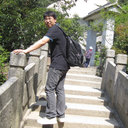Construction of ureteral grafts by seeding urothelial cells and bone marrow mesenchymal stem cells into polycaprolactone-lecithin electrospun fibers.
Nøgleord
Abstrakt
The aim of the present study was to investigated the construction of polycaprolactone-lecithin (PCL-L) electrospun fibers as a novel scaffold material for a tissue-engineered ureter. The effect of bone marrow mesenchymal stem cells (BM-MSCs) on the neovascularization of the scaffolds and the viability of planted urothelial cells (UCs) on PCL-L were also studied. UCs were obtained from New Zealand rabbit bladders, cultured and then seeded onto the lumen of the tubular scaffolds before being subcutaneously transplanted into the space of nude mice. The cultured UCs showed vacuolar degeneration after 7 days of transplantation and they gradually degraded thereafter. To facilitate the regeneration of the tissue-engineered ureter and the survival of UCs in the implant, MSCs were seeded into the tubular grafts by rolling up the nanofibrous membrane, followed by the seeding of UCs. This facilitated the survival of the UCs, which formed several cellular layers after 30 days. The mean microvessel density was significantly increased in tissues seeded with MSCs. Cell-tracking experiments revealed that the transplanted MSCs did not integrate directly into capillaries for angiogenesis. Our results demonstrated that the PCL-L electrospun fibrous scaffold has a high potential for a tissue-engineered ureter especially when seeded with BM-MSCs, which enhanced angiogenesis.




